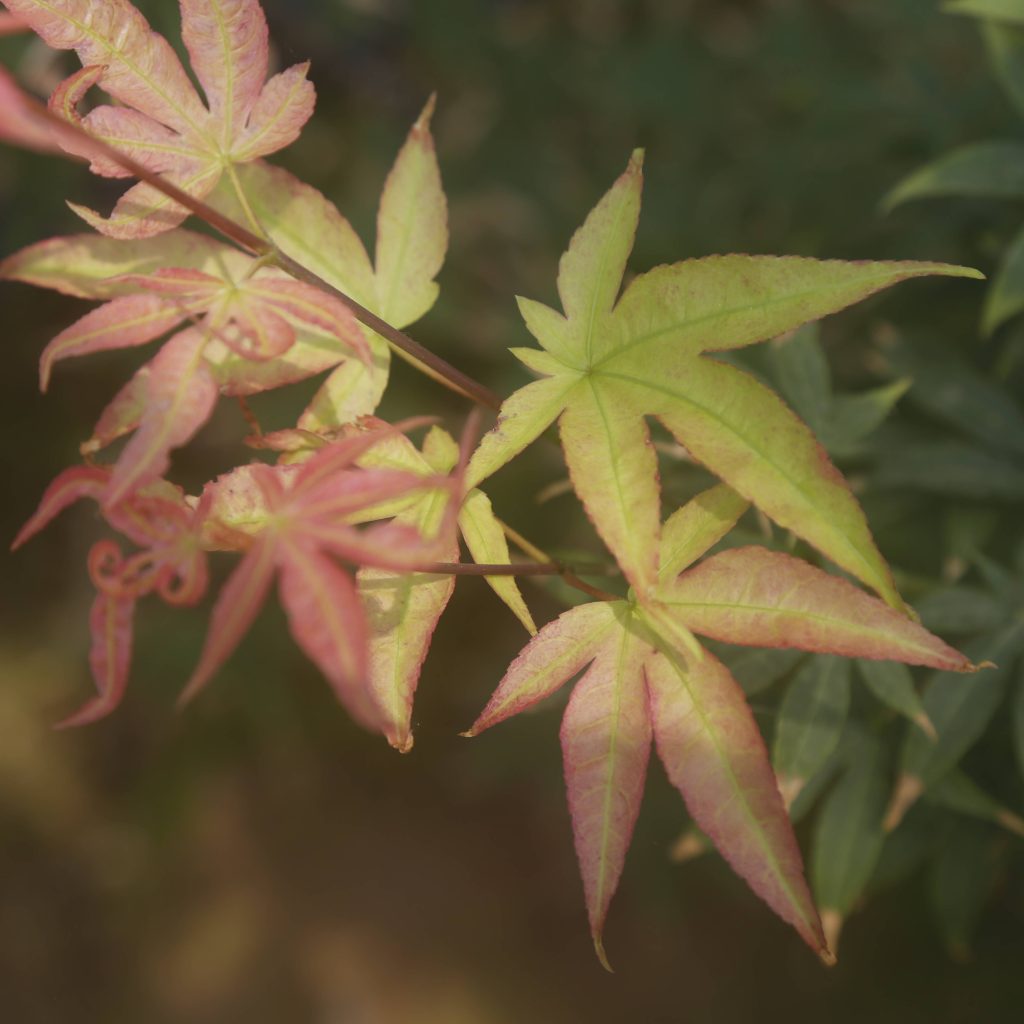Author Introduction:
Write by ANHUI FUYANG JINFENG ECOAGRICULTURE CO.,LTD., where gardening expertise meets premium quality plants and trees! With over 30 years of experience, we’ve cultivated a reputation as specialists in providing top-notch flora for all your gardening needs. What began with a few humble plastic greenhouses has blossomed into a sprawling operation spanning about 300 acres.

When selecting trees for landscaping, understanding the unique attributes of each species is crucial. Japanese Maple (Acer palmatum) and Red Maple (Acer rubrum) are two popular choices, but they differ significantly in their characteristics, growth habits, and uses. This detailed comparison will help you make an informed decision based on your specific needs and preferences.
Japanese Maple (Acer palmatum)
Appearance and Size:
Japanese Maples are celebrated for their exquisite foliage and graceful form. They usually reach a height of 15 to 25 feet (4.5 to 7.5 meters), although some dwarf varieties may only grow to 4 to 6 feet (1.2 to 1.8 meters). The tree has a broad, rounded canopy that provides a beautiful, lacy appearance.
The leaves of Japanese Maples are deeply lobed, often with 5 to 9 segments that create a delicate, hand-like shape. The variety of leaf colors is one of their most attractive features, ranging from deep reds and purples to vibrant greens and even variegated patterns with splashes of white or pink. In autumn, the foliage can turn brilliant shades of red, orange, or yellow, providing a spectacular display.
Growth Habit:
Japanese Maples are known for their slow to moderate growth rate. Their branches tend to be more delicate and can be either upright, weeping, or spreading, depending on the variety. This slow growth and compact size make them ideal for smaller gardens or as accent trees in larger landscapes. They often have a distinct, sculptural quality, adding a touch of elegance to any garden setting.
Growing Conditions:
Japanese Maples thrive in well-drained, slightly acidic to neutral soil. They prefer a location with partial shade, particularly in regions with hot summers, to protect their leaves from scorching. They are sensitive to extreme temperatures; while they are hardy in USDA Zones 5 to 8, they may require some winter protection in colder climates or shading in extremely hot areas.
Uses:
Due to their ornamental value, Japanese Maples are often used in decorative garden settings, including Zen gardens, Asian-inspired landscapes, and bonsai cultivation. Their striking foliage makes them perfect as focal points, specimen trees, or in container gardening. They are also well-suited for use in small urban gardens or as accent trees in larger landscapes.

Red Maple (Acer rubrum)
Appearance and Size:
Red Maples are much larger and more robust than Japanese Maples. They typically grow to heights of 40 to 60 feet (12 to 18 meters) with a spread of 30 to 50 feet (9 to 15 meters). Their canopy is more upright and broad, providing substantial shade.
The leaves of Red Maples are also palmate but usually have three to five lobes. They start as green during the growing season and transition to bright red, yellow, or orange in the fall, providing a vivid display. The tree’s bark is grayish and becomes furrowed as it matures, adding additional texture to the landscape.
Growth Habit:
Red Maples are known for their fast growth rate and sturdy branches. Their rapid development makes them ideal for providing quick shade and can be useful in large-scale landscaping projects. They have a more vigorous growth habit compared to the more delicate Japanese Maple, and their branches are generally more robust.
Growing Conditions:
Red Maples are highly adaptable and can thrive in a range of soil types, including wet, poorly-drained soils. They can tolerate full sun to partial shade and are hardy in USDA Zones 3 to 9. This adaptability makes them suitable for a variety of environmental conditions, from urban streetscapes to rural landscapes.
Uses:
Red Maples are commonly used in urban environments and large residential landscapes due to their size and rapid growth. They are often planted as street trees, in parks, and in areas needing quick shade or visual screening. Their adaptability to different soil conditions and climates makes them a versatile choice for many landscaping applications.
Detailed Comparison
Leaf Characteristics:
Japanese Maple: Leaves are deeply lobed with a delicate, intricate appearance. They come in a wide range of colors and patterns, providing seasonal interest throughout the year.
Red Maple: Leaves are simpler in shape with fewer lobes. They offer vibrant fall color but are less varied in appearance compared to Japanese Maples.
Growth Rate and Size:
Japanese Maple: Slow to moderate growth rate with a compact size, making it suitable for small spaces and ornamental purposes.
Red Maple: Fast growth rate and large size, making it ideal for providing shade and quick landscape coverage.
Adaptability and Care:
Japanese Maple: Requires well-drained, slightly acidic soil and benefits from partial shade, especially in hot climates. Sensitive to extreme temperatures.
Red Maple: Highly adaptable to various soil conditions and can tolerate both wet and dry soils. More tolerant of a range of temperatures and growing conditions.
Aesthetic Value:
Japanese Maple: Highly valued for its ornamental beauty, intricate leaf structure, and wide range of colors.
Red Maple: Valued for its robust growth, shade provision, and vibrant fall color. Less intricate in appearance but more functional in larger landscapes.
Conclusion
Choosing between Japanese Maple and Red Maple largely depends on your specific landscape needs and preferences. Japanese Maples offer exceptional ornamental value with their delicate foliage and varied colors, making them perfect for decorative garden settings and smaller spaces. On the other hand, Red Maples provide rapid growth, large size, and adaptability, making them ideal for larger landscapes and urban environments where quick shade and robustness are required.
By considering the characteristics and uses of each tree, you can select the one that best fits your garden’s design and functional needs, ensuring a beautiful and thriving landscape.

